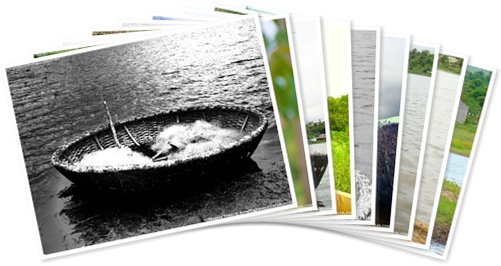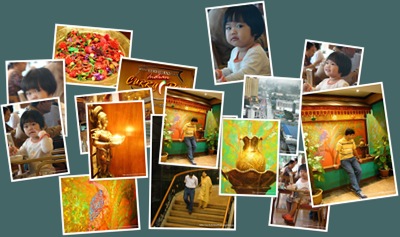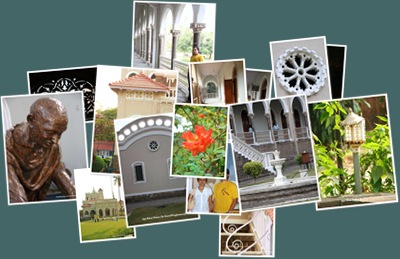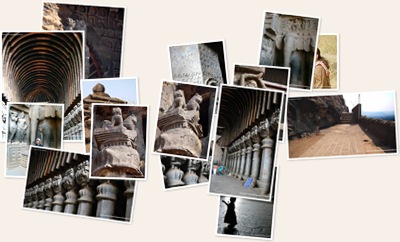My name is Kunal D Waghmare. I live in India. I'm 25 and Male. I'm a Electronics and Communications graduate. I've many hobbies, interests and skills. From driving cars including my Van to trekking to painting and photography. From reading to cooking. And yes, I'm a born connoiseur of food! So if anyone is reading this send me your favourite recipes. At KunalWaghmare@Gmail.com, kunal
Wednesday, July 21, 2010
Tuesday, May 11, 2010
Thursday, March 04, 2010
Sachin Tendulkar Hilarious poem NOT BY ME
सुखकर्ता दुःखहर्ता वार्ता आनंदाची !
अविस्मरणीय खेळी तुझी द्विशतकाची !
सर्वांगी सुंदर उधळण चौकारांची !
आकाशी झळके माळ उत्तुंग षटकारांची !
जय देव जय देव जय तेंडुलकरा !
तुझ्या चरणी माझा मानाचा मुजरा !
जय देव जय देव ..
१४७ चेंडू खेळपट्टी वरी उभा !
सर्व गोलंदाजांची दिसे दिव्य शोभा !
मदतीला कार्तिक पठाण धोनी आले गा !
धावांचा डोंगर उभा राहिला बघा !
जय देव जय देव जय तेंडुलकरा !
तुझ्या चरणी माझा मानाचा मुजरा !
जय देव जय देव ..
दुमदुमले मैदान झाला जल्लोष !
थरथरला गोलंदाज मानिला खेद !
कडाडली बॅट चेन्डुचा शिरच्छेद !
असामान्य अद्भुत शक्तिचा शोध !
जय देव जय देव जय तेंडुलकरा !
तुझ्या चरणी माझा मानाचा मुजरा !
जय देव जय देव..
घालीन लोटांगण वन्दिन चरणं !
डोळ्याने पाहिले द्विशतक तुझे !
पोस्टर लावूनि, आनंदे पुजिन !
भावे ओवाळीन, "सचिन" नामा !
त्वमेव ब्रॅडमन, बॉर्डर त्वमेव !
त्वमेव गावसकर, लारा त्वमेव !
त्वमेव फलंदाज, गोलंदाज त्वमेव !
त्वमेव क्षेत्ररक्षक, ऑलराउन्डर त्वमेव !
गुड लेन्थ टाकले, यॉर्कर टाकले !
बाउन्सर टाकले , व्यर्थ सारे !
ड्राइव्स तू मारले, पुल तू मारले !
फ्लिक्स तू मारले, सार्थ सारे !
हरे सचिन, हरे सचिन, सचिन सचिन हरे हरे
हरे तेंडुलकर, हरे तेंडुलकर, तेंडुलकर हरे हरे !!
Friday, February 12, 2010
Wednesday, February 10, 2010
AgaKhan Palace
AgaKhan Palace by Kunal Waghmare
The Aga Khan Palace was constructed by Sultan Mohammed Shah, Aga Khan III, in the year 1892. Built in Yerwada, near Pune, it was intended to be a source of employment for the famine-struck villagers in the surrounding areas. Prince Karim El Husseni, Aga Khan IV, donated the palace to the Government of India in 1969, in memory of Mahatma Gandhi and his philosophy.
Aga Khan Palace is in Kalyani Nagar, Pune
The Aga Khan Palace is also known as the Gandhi National Memorial because of its close association with Mahatma Gandhi, who was kept at this palace under house arrest in the 1940s. His wife, Kasturba Gandhi, and his long-time aide, Mahadev Desai, both died while under house arrest in this palace, and their samadhis (memorials) were built here by Charles Correa. A museum inside the palace complex has a rich collection of pictures and photographs of the important incidents in his life. There is also a wide assortment of his personal items, including utensils, clothes, mala, chappals (slippers), a letter written by Gandhi on the death of his secretary, and so on. A small amount of Gandhi's ashes are kept here as well.
The Aga Khan Palace as seen from its entrance
This palace was one of the filming locations of Richard Attenborough's biopic of Gandhi, Gandhi. Since 1980, the museum, samadhis and campus of the Aga Khan Palace has been managed by the Gandhi Memorial Society. Exhibitions are held at the palace on a regular basis to showcase the life and career of Mahatma Gandhi.
by Kunal Waghmare email me at kunalwaghmare@Gmail.com
Tuesday, February 09, 2010
Play Yamaha Game!! by Kunal Waghmare
NOTE Takes time to load up….
Click Above to Play Yamaha Motor Bike games you will be given two options play with mouse or with Mouse+Keyboard!! Observe the RED button and click next to continue ..You can select from three types of machines Balance, Speed and Cornering type..Enjoy!
By Kunal Waghmare Email me at KunalWaghmare@Gmail.com
Thursday, February 04, 2010
Kunal Waghmare Karla Caves Pics
Hi This is Kunal Waghmare I went to Buddhist caves of Karla now taken over by Ekvira Temple...Although its nice that both faith temples co-exist .but it is sad that sacrifices of animals are made in front of temple and monastery which preaches peace and non violence
About Lonavla
There are about 1000 rock cut caves in Western India, a large number of which are about Lonavla whose original name , Lenauli, means the places of many caves (lena meaning cave). Of these the most famous are at Karla, Bhaja, Bedsa and Kondane
The concept:
The concept of retreating to solitary caves in forests or mountains for meditation was common to Hinduism, Buddhism and Jainism so that , where no natural caves existed, it was but one more step to carve out a cave. However, in a view of the importance of monasticism in Buddhism, the largest number of caves are Buddhist in origin. Amongst these caves were the Chaitya (Chapel or Cathedral ) for the holding of prayers and rituals and the Vihara (monastery ) for the residence of Buddhist monks. There were two periods of high creative activity in the building of rock- cut temples in this area, the first from the 02nd century B.C. to the 02nd century AD. and the second from the 05th to the 10th centuries AD. Such was the artistic excellence of the artisans and the genius of the designers, as the architecture is geometrically perfect and the engineering designs flawless.
About the period and KARLA:
IN the early period Hinayana Buddhism (or the Little Vehicle) prevailed and in the latter, Mahayana Buddhism (or the Great Vehicle).
In the Hinayana period, to which Karla belongs , the architectural design was wood based, being copies of wooden buildings of an earlier age.
Also, as the Buddha, not wanting to be deified , had decreed that after his death, "neither the gods nor men shall see him ",
Therefore In this period THE BUDDHA is represented by symbols instead of actual statues.
The lotus or elephant , symbolizing his birth, the bodhi tree under which he attained Nirvana ( enlightenment) , the wheel of law which he set in motion , a stupa or mound symbolizing his death, a throne atop symbolizing that he is a prince among men, his footsteps which the Buddha is represented in sculptures and paintings of the early phase.
Dating back to the 02nd century B.C., the monuments at Karla are at a distance of 11 km. From Lonavla and just a little off the Bombay- Pune road . There is one large Chaitya or prayer hall and several niharas or monasteries of this group on a hill 150 metres high. The steps of the hill were built in the same period. Off all the cave temples of India, the Great Chaitya at Karla is considered one of the greatest monuments in the world of art. One of the inspirations inside the cave describe it as the most outstanding rock- cut hall in Jambudvipa (the ancient name for India). The Karla Chaitya is one of those rare instances of magnificent pillars framing the entrances to a cave. At the entrance stands a huge pillar over 15 metres high, with lion capitals as in the Ashoka pillar at Sarnath. However, the matching pillar has broken down and in its place is a Hindu(KOLI)temple to Goddess Ekveera , which is a place of local pilgrims even today., The sad part is that sacrifice of animals are made here in front of Buddha.
The Architecture
In the outer porch is a vestibule outlined by walls with carvings of couples and elephants. This area once sported a balcony. The main hall, called the Great Chaitya or the great cathedral, is majestic in size and the largest of its kind. It is 124 ft . by 461/2 ft. And is 45 ft. High (38 metres by 14 metres by 13.8 metres). Inside are these important features, the columns or pillars, the roof vault and the great sun window. There are 37 columns in all of which 30 have interesting capitals showing prosperous men and women riding elephants and horses yet bowing in humility to the Great Buddha.
The valued roof has wooden supports giving an idea of what wood built architecture used to be like 2000 years ago, the only place in India where 2000 year old woodwork can be seen. The roof at the carved end resembles a Gothic vault. At the far end of the hall stands a stupa , literally meaning funeral mound, above which is held an umbrella , a symbol of royalty.
The whole system of lighting depends on the great Chaitya window through which cleverly diffused light with its lights and shadows gives a great sense of solemnity to the scene. Few cave temples can match that at Karla for its light and shade effects. Belonging to a great period of Indian history, it is natural that Karla had great impact on Buddhist art the world over. This Great Chaitya of Karla was once a place of pilgrimage for Buddhists from all over the world, so that, even today , as one walks in, one feels the vibrations of prayers of 2000 years, of hushed whispers of pilgrims , of the chanting of yellow- clad monks.
It is roughly 3 kms. from the main road , to the 18 Bhaja caves. They are in a lusher, greener setting than the Karla caves, and are thought to date from around 200 B.C. Ten of these caves are Viharas , while cave 12 is a Chaitya , similar in style to the Karla cave and the most important. About 50 mts. past this is a strange group of 14 Stupas, five inside and nine outside the caves. The last cave on the South side has some fine sculptures. A few minutes' walk past the last cave is a beautiful waterfall which, during the monsoon and shortly afterwards, has enough water for a good swim. From the waterfall you can see some old forts.
By
Kunal Waghmare



